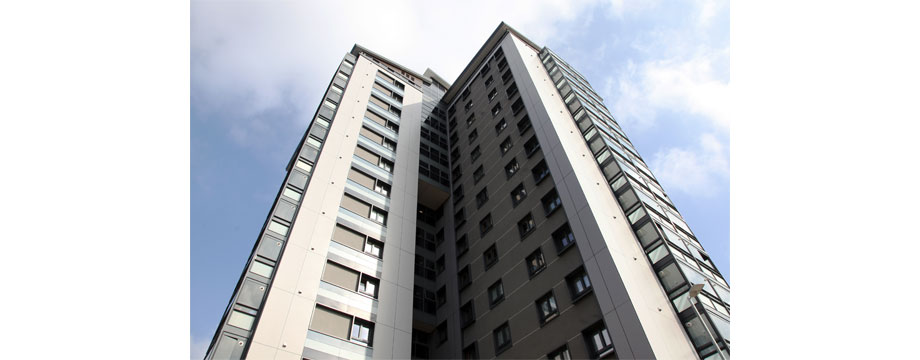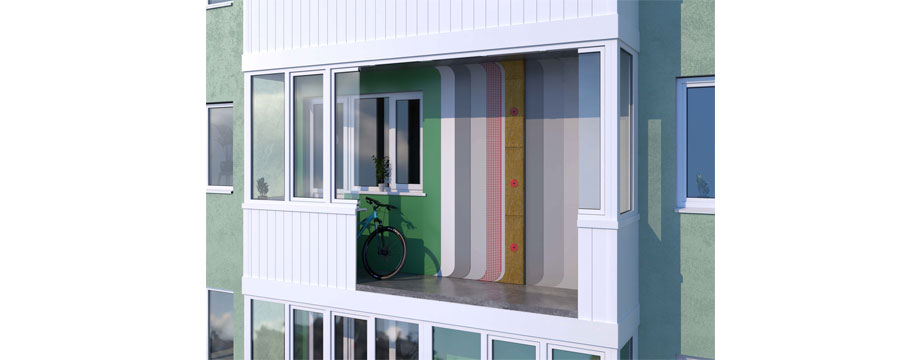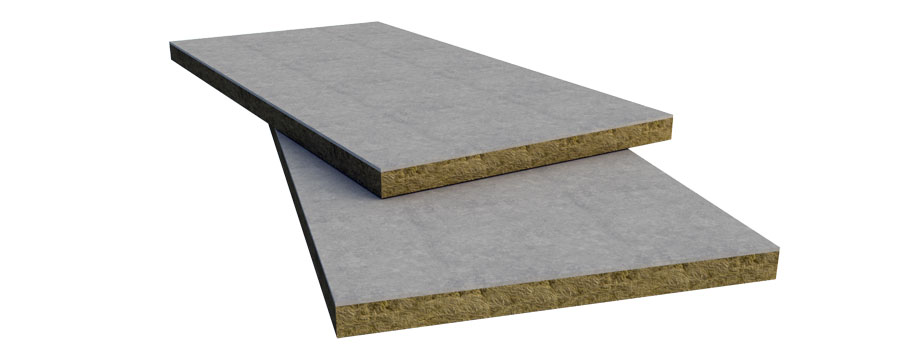The conversation around fire safety in high rise developments has never been more critical, and much attention is being given to the building materials used across large expanses such as façades and flat roofs. To achieve regulatory compliance, however, it’s crucial to pay attention to each and every detail. Will Wigfield, Product Manager – Building Envelope, ROCKWOOL UK, examines the fire safety implications of external amenities above ground level such as balconies, upstands and terraces, and discusses product certifications which help stakeholders to achieve the required performance.

In the housing association sector, high rise developments present an effective way to provide a suitable quantity and quality of affordable homes amidst the space constraints of urban life. To improve the enjoyability of high rise homes, balconies and terraces can offer outdoor space which is all the more important as many individuals continue to work from home.
But where balconies and upstands feature on ‘relevant’ buildings [I], they fall within the scope of the combustible ban [II]. This means that they must be constructed of materials rated Euroclass A2-s1, d0 or better. Products such as ROCKWOOL HARDROCK® UB34, that have been fully tested and classified as Euroclass A2-s1, d0, are therefore becoming key to achieving Building Regulation compliance.
Unlike balconies however, neither mid-level roofs nor terraces count as “specified attachments” in Approved Document B (ADB), and therefore fall outside the scope of the combustible ban.
It’s important to note that if a combustible insulated flat roof system at mid-level becomes engaged in a fully developed fire, not only would this act as a fuel source to potentially attack the façade above, it may also produce smoke and toxic gases that could enter the building through vents or open windows.

Treating flat roofs as the ‘fifth façade’
Beyond applications impacted by the combustible ban, ADB places a restriction on the combustibility of materials that can be carried over the roof deck, in areas 1500mm either side of a compartment wall. Where this restriction applies, insulation should be Euroclass A2-s3,d2 or better.
However, non-combustible insulation is increasingly used across the entire roof area of buildings, removing any need to design, specify and install individual zones of non-combustible insulation at compartment wall locations. The use of non-combustible rather than combustible insulation reduces the fuel load available to a fire, and avoids the complication of potentially having to use different insulation materials across multiple zones on the same roof.
As non-combustible materials do not contribute to the spread of fire or emit significant toxic smoke or gases, the installation of non-combustible insulation in a flat roof build-up can be considered best practice. Installing non-combustible insulation across a flat roof treats it as the ‘fifth façade’, matching the established principle of using non-combustible materials in the most safety-critical elements of building construction – and brings the roof in line with the approach mandated for external walls covered by the combustible cladding ban.

Securing dependable, long-term performance
As well as contributing to the fire safety and thermal performance of flat roof build-ups and façade elements, certain insulation solutions can also deliver acoustic performance which improves conditions for tenants.
Third-party testing has demonstrated that ROCKWOOL HARDROCK® Multi-Fix (DD) is effective at reducing the transfer of both airborne and rain noise, in a range of different build-ups.
Reassuringly, both ROCKWOOL HARDROCK® Multi-Fix (DD) and Tapered have been certified by the British Board of Agrément (BBA), following rigorous testing of their durability, thermal and fire performance. With their ability to perform in their intended applications now further validated, designers and tenants alike can be even more confident in these flat roof insulation solutions.
Third-party accreditations help simplify routes to compliance, clearly demonstrating a product’s suitability for applications such as flat roofs and amenities – and where fire safety is paramount, such as in high rise developments, these clear indicators of quality are extremely valuable.
To learn more about fire risk in the roof, download the ROCKWOOL whitepaper ‘Flat roofs: Managing fire risk in the fifth façade’: www.rockwool.com/uk/fifthfacade.
I: The ban on combustible cladding is applicable to relevant buildings over 18m as specified in Building Regulation 7 (2).
II: Separate rules apply for buildings in Scotland over 11m.
- Log in to post comments













